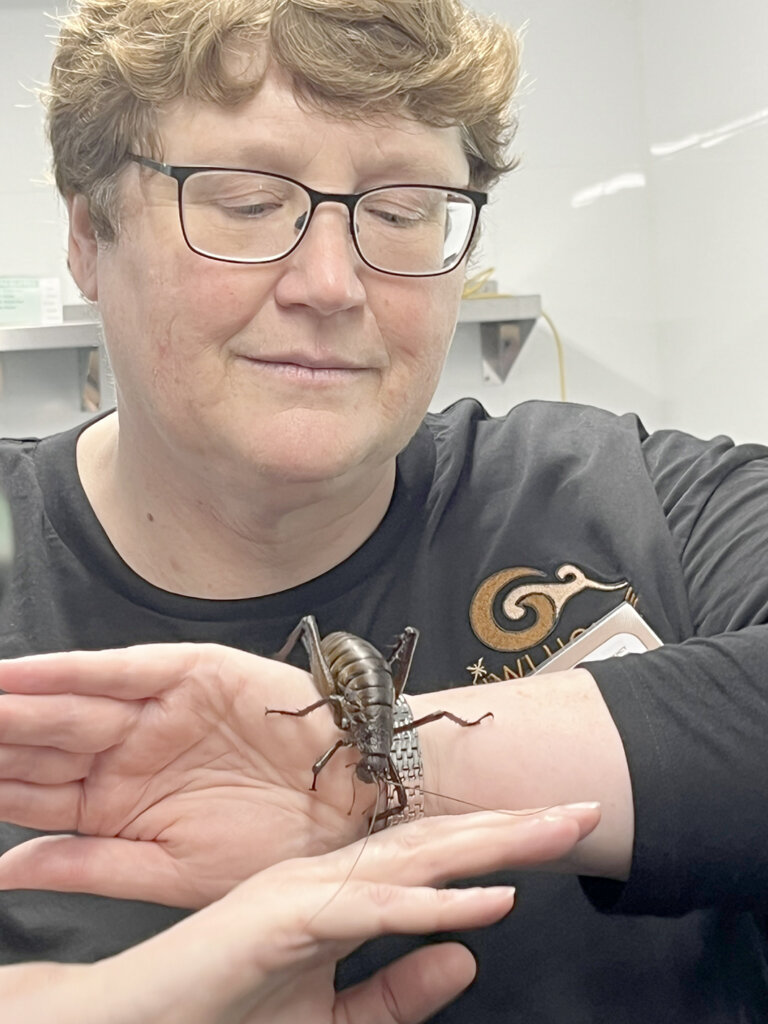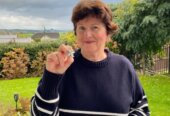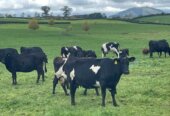They have been around for millions of years, often don’t live long enough to celebrate a second birthday – and without human help they will die out.
So the opening of a new wing at the Ōtorohanga Kiwi House last weekend was a big moment for the Māhoenui giant wētā.

Kiwi House manager Jo Russell with a Māhoenui giant wētā. Photo Sigrid Christiansen
The facility comprises laboratories devoted to raising the insects and animal training, and quarantine facilities.
Giant wētā numbers have plummeted as a consequence of the introduction of mammals and possums into New Zealand and their conservation status is listed as threatened – nationally critical.
It is thought they were once present throughout lowland forests in Waikato – so the discovery of a population on farmland owned by the Rauputu family at Māhoenui, 20km south west of Piopio, in 1962 was regarded as significant. The Conservation Department bought the land and turned it into a reserve where goats and gorse are protected.
Gorse – another introduced pest – provides a sanctuary from rats, hedgehogs and possums and browsing goats encourages regrowth.
Marae in the Piopio, Āria and Māhoenui areas – the Mōkau ki Runga hapū – gifted the name ‘Taonga o Kawakawa’, the treasure of Kawakawa to the new wing at Ōtorohanga’s Kiwi House.
Kawakawa is the name of the land on which the Māhoenui Giant Wētā Scientific Reserve is sited.
Present for the opening were conservation minister Tama Potaka and Taranaki-King Country MP Barbara Kuriger.
Potaka acknowledged community support in caring for the wētā. .
“The mahi that’s been done with the Māhoenui giant wētā probably wouldn’t have happened without the Rauputu family pitching in and putting their taonga into this kaupapa,” he said.
Marina and Ngātai Rauputu, on whose land the Māhoenui giant wētā was originally identified were also present.
It was also revealed at the weekend that the Kiwi House had hatched 140 wētā offspring, and about 100 were likely to reach breeding age.
General manager Jo Russell said the new facility was purpose built for breeding the giant wētā and a second group were breeding
“Females can lay up to 300 eggs so we expect to be very busy when they begin to hatch next year.”
The Māhoenui giant wētā is one of the world’s largest insects, measuring up to seven centimetres and weighing about 15 grams.
It is found in only four places in the North Island.








